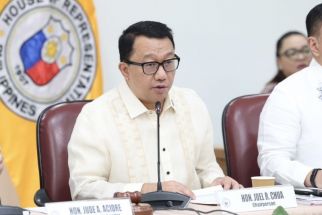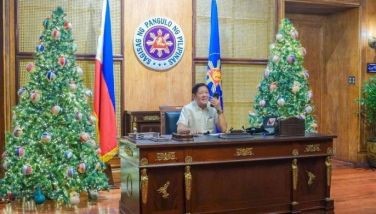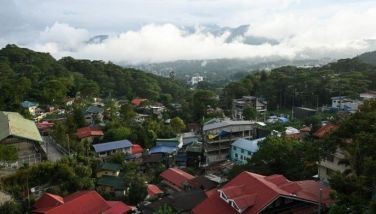Press Freedom and National Security
April 30, 2002 | 12:00am
Click here to read Part III
Chairperson, Communication,
UNESCO National Commission of the Philippines
Last year on Sept. 26, President Arroyo outlined a 14-point counter-terrorism course of action which police say has been the focus of police work and intelligence. They include efficient intelligence coordination, the involvement of local government, interfaith dialogues, media’s constructive support and in-depth study and measures to address the roots that spawn terrorism. Overall authority is given to a cabinet oversight committee under Executive Secretary Alberto Romulo.
Datu and former Representative Michael Mastura reinforces the critical importance of the influence exerted by media conglomerates in defining news. Prof. Luis Teodoro also decries the dominance of commercialism which decides not only what information to disseminate but also what to kill. It could be the most important ethical issue in that it links all other ethical issues – sensationalism, willful withholding of information, biased reports, even the emphasis on sex and violence, all of which sell newspapers and boost ratings.
In the same vein, Mastura raises the same issue – that we are at the mercy of giant centralized broadcasting networks that shape the materials delivered by the media about terrorism. Can instant, nightly "expert opinions" replace daily newsgathering in the field and the small, independent journalists with experience in the areas? he asks. Here, the role of the community newspaper and small community radio in areas like Mindanao and potential conflict areas is central as they are expected to have better knowledge about the enemy and the terrain of the conflict zone.
In Mastura’s outline of a framework for understanding Muslims and problems associated with terrorism, he cites issues such as media portrayal of terrorism where more often than not, there is imagery and stereotyping and racial and ethnic profiling. On media’s treatment of Islam and the Muslims, he noted the absence of backgrounding, the reporting of unexamined and hidden assumptions, and the tendency to proceed from dominance or confrontation.
Media coverage, he noted, does not come out of a vacuum. It needs judgment and interpretation. Publicity is an essential factor in terrorist strategy. This is demonstrated by efforts exerted by the Abu Sayyaf group and other terrorists to gain as much media mileage through print and broadcast channels and through well-designed websites.
Finally, the emerging consensus during the meeting was that the media had been remiss in its duty to provide vital information needed by the public. This includes information on social, economic, political and security issues. Both De Jesus and Teodoro cite a Center for Media Freedom and Responsibility study which showed the glaring absence of contextualization in articles which could have helped establish better understanding between the Muslim and Christian communities.
The book "Muslim and Christian Cultures: A Search for Commonalities," a compilation of eight scholarly papers on Muslim-Christian commonalities in the areas of religion, family life, community life, political aspects, education, women, legal aspects and sustainable development is just off the press. By focusing on commonalities rather than differences, the book is a modest contribution to the literature on conflict resolution especially among various cultural groups. A publication of the UNESCO National Commission and the Asian Institute of Journalism and Communication, it will be available during the International Conference on Terrorism and Media at the Westin Philippine Plaza from May 1-3, 2002.
Chairperson, Communication,
UNESCO National Commission of the Philippines
Datu and former Representative Michael Mastura reinforces the critical importance of the influence exerted by media conglomerates in defining news. Prof. Luis Teodoro also decries the dominance of commercialism which decides not only what information to disseminate but also what to kill. It could be the most important ethical issue in that it links all other ethical issues – sensationalism, willful withholding of information, biased reports, even the emphasis on sex and violence, all of which sell newspapers and boost ratings.
In the same vein, Mastura raises the same issue – that we are at the mercy of giant centralized broadcasting networks that shape the materials delivered by the media about terrorism. Can instant, nightly "expert opinions" replace daily newsgathering in the field and the small, independent journalists with experience in the areas? he asks. Here, the role of the community newspaper and small community radio in areas like Mindanao and potential conflict areas is central as they are expected to have better knowledge about the enemy and the terrain of the conflict zone.
In Mastura’s outline of a framework for understanding Muslims and problems associated with terrorism, he cites issues such as media portrayal of terrorism where more often than not, there is imagery and stereotyping and racial and ethnic profiling. On media’s treatment of Islam and the Muslims, he noted the absence of backgrounding, the reporting of unexamined and hidden assumptions, and the tendency to proceed from dominance or confrontation.
Media coverage, he noted, does not come out of a vacuum. It needs judgment and interpretation. Publicity is an essential factor in terrorist strategy. This is demonstrated by efforts exerted by the Abu Sayyaf group and other terrorists to gain as much media mileage through print and broadcast channels and through well-designed websites.
Finally, the emerging consensus during the meeting was that the media had been remiss in its duty to provide vital information needed by the public. This includes information on social, economic, political and security issues. Both De Jesus and Teodoro cite a Center for Media Freedom and Responsibility study which showed the glaring absence of contextualization in articles which could have helped establish better understanding between the Muslim and Christian communities.
The book "Muslim and Christian Cultures: A Search for Commonalities," a compilation of eight scholarly papers on Muslim-Christian commonalities in the areas of religion, family life, community life, political aspects, education, women, legal aspects and sustainable development is just off the press. By focusing on commonalities rather than differences, the book is a modest contribution to the literature on conflict resolution especially among various cultural groups. A publication of the UNESCO National Commission and the Asian Institute of Journalism and Communication, it will be available during the International Conference on Terrorism and Media at the Westin Philippine Plaza from May 1-3, 2002.
BrandSpace Articles
<
>
- Latest
- Trending
Trending
Latest
Trending
Latest
Recommended






























